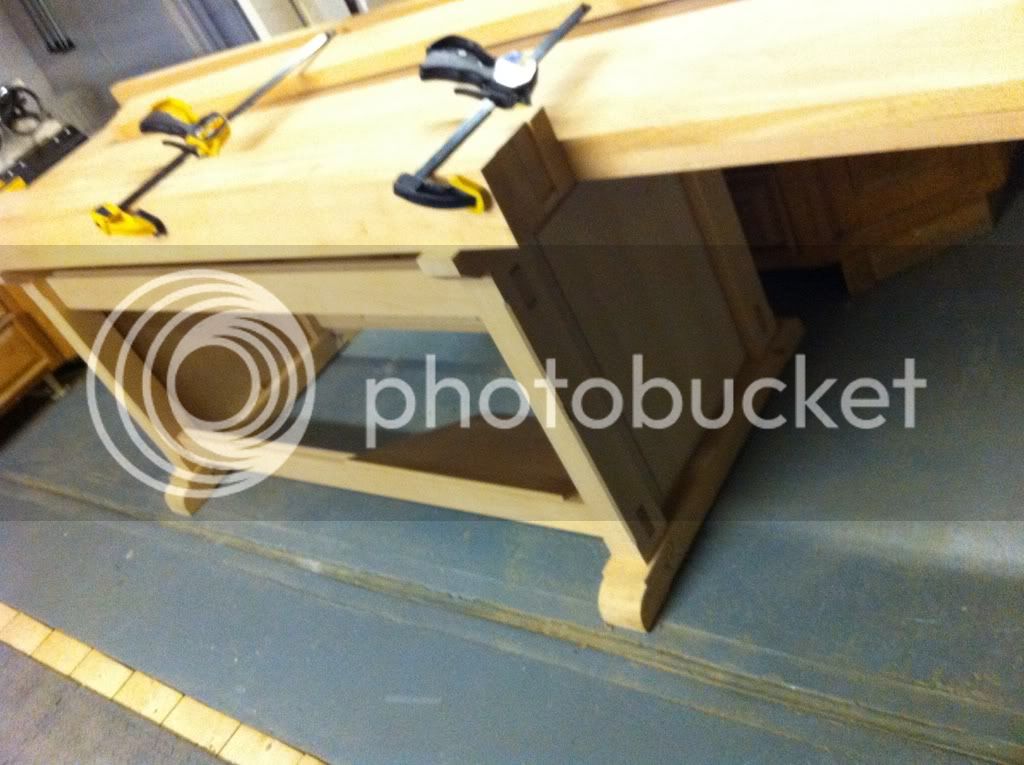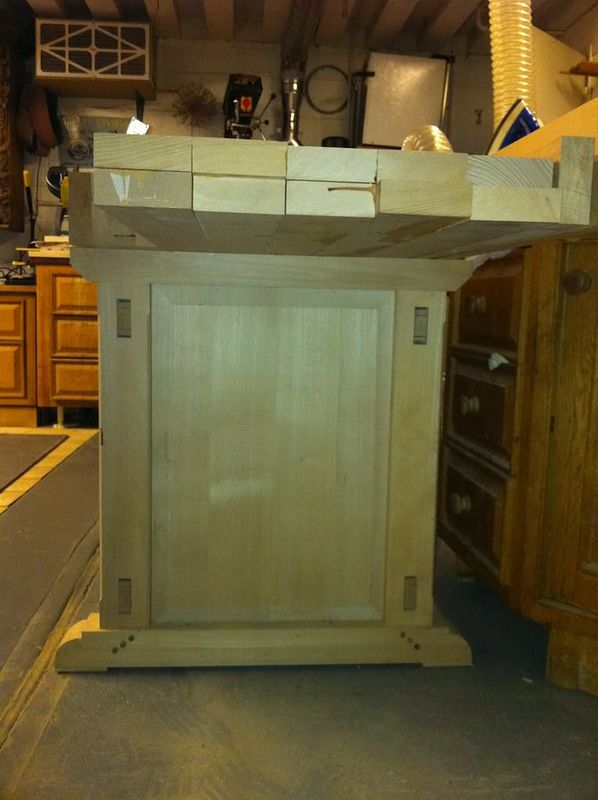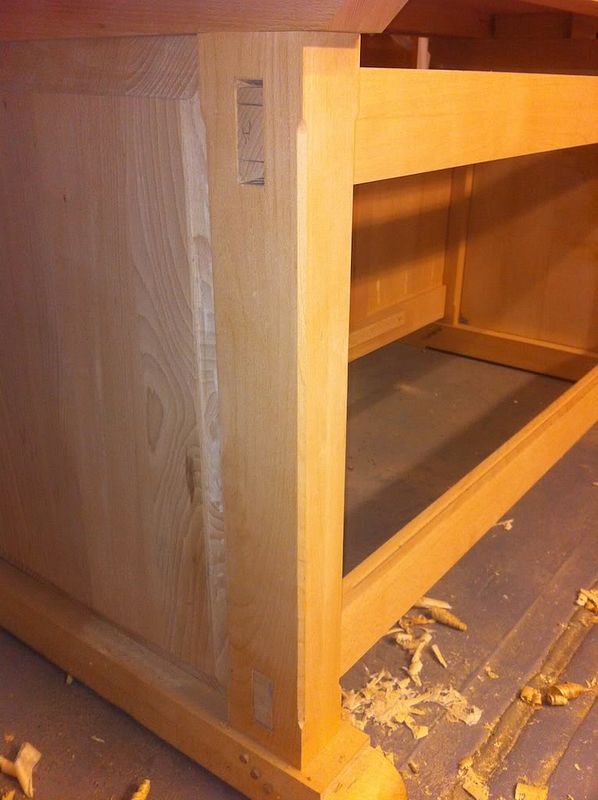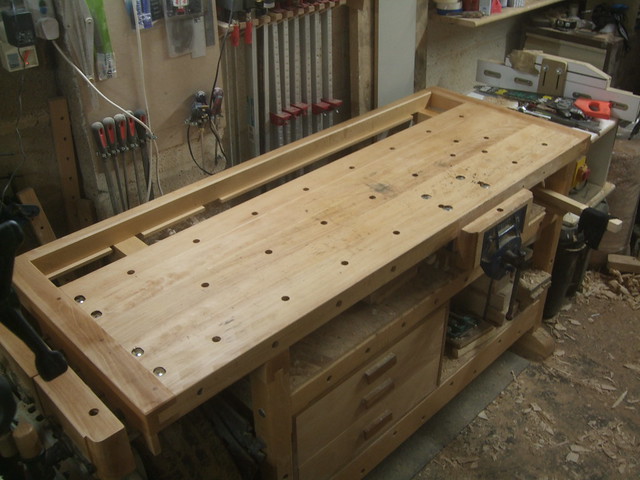noddy67
Established Member
I have pretty much completed the base and the central top section for a workbench build that has been a very very long drawn out project. A couple of photos below:



The original plan was to go with a traditional tail vice and probably a twin screw front vice. For a while I'd been looking at a wagon vice option as a possibility but not committed in that direction.
I then made the mistake (although most enjoyable one) of going over to see Douglas's beautiful workbench build :
a-life-of-vice-my-new-bench-t52608.html
and that has thrown up a lot of new questions. I've now decided to go ahead with a Wagon vice, probably still with a twin screw in front. One detail Douglas was very keen on was having the bench top front face flush with the legs, allowing clamping to the front of the bench. While I can just about see this being possible on mine I'm not sure its necessarily the way to go. The bench may end up being too high/not as structurally sound as I'd like etc .
I'd be interested if anyone has any thoughts on whether to try and adapt my base to accommodate this or not. Any personal bench designs welcome too.
Many thanks



The original plan was to go with a traditional tail vice and probably a twin screw front vice. For a while I'd been looking at a wagon vice option as a possibility but not committed in that direction.
I then made the mistake (although most enjoyable one) of going over to see Douglas's beautiful workbench build :
a-life-of-vice-my-new-bench-t52608.html
and that has thrown up a lot of new questions. I've now decided to go ahead with a Wagon vice, probably still with a twin screw in front. One detail Douglas was very keen on was having the bench top front face flush with the legs, allowing clamping to the front of the bench. While I can just about see this being possible on mine I'm not sure its necessarily the way to go. The bench may end up being too high/not as structurally sound as I'd like etc .
I'd be interested if anyone has any thoughts on whether to try and adapt my base to accommodate this or not. Any personal bench designs welcome too.
Many thanks





